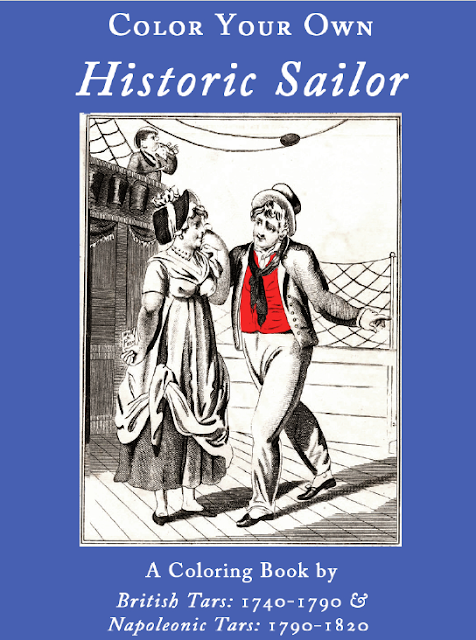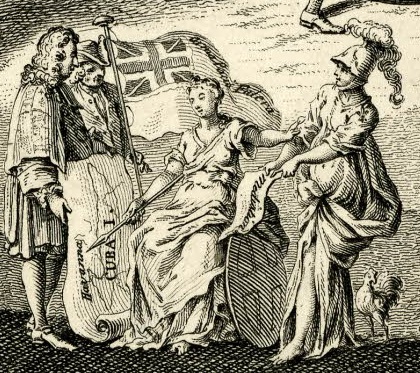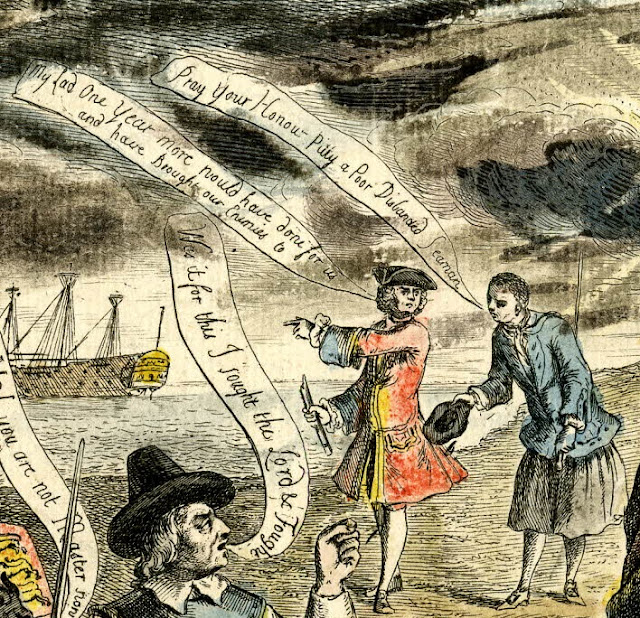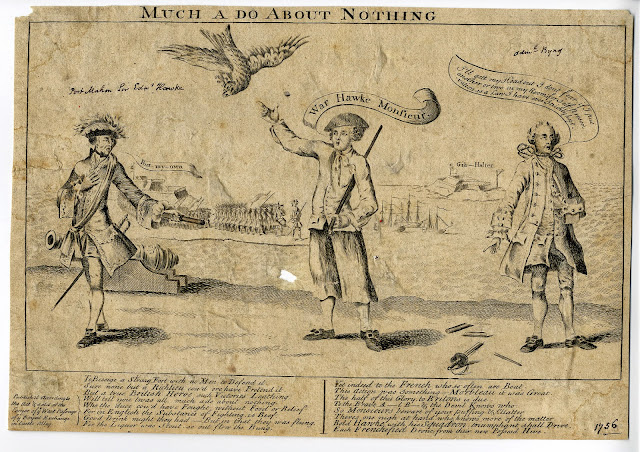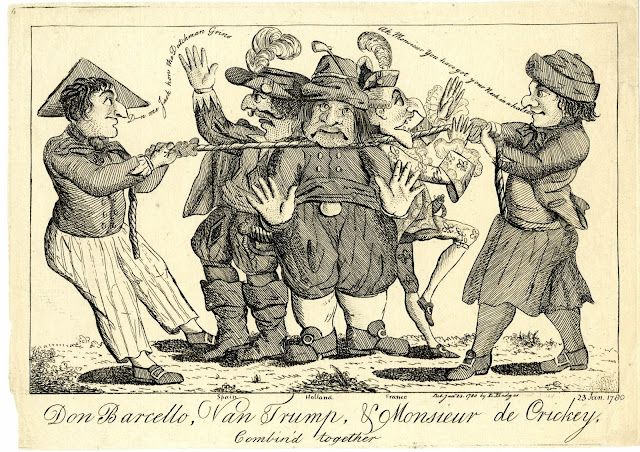 |
| Richard Henry Dana's straw tarpaulin hat, Mystic Seaport Collection. |
EDIT: In an earlier version of this post, I asserted that tarred clothing was used in the Victorian era, and that this was likely a backward projection. This is often the case with other sailor myths: shanties, superstition, and more. However, the inestimable Matthew Brenckle pointed me to some excellent research by Tyler Putman that also explores the paucity of sources in the 19th century to support its widespread practice.
This does not appear to be a practice in the eighteenth century. Our misunderstanding is partly a misreading of the original sources. There are many runaway advertisements that mention the 'tarr'd' garments of sailors in the eighteenth century. This example from The Maryland Gazette is just one of those:
This merely proves that the clothing is covered in tar, and says nothing about intent. As J.L. Bell has pointed out over at Journal of the American Revolution, pine tar of the eighteenth century has a melting point that is half that of modern asphalt tar: 140°F (60°C). More importantly for our discussion, pine tar becomes sticky at an even lower temperature.[1] Merely from living aboard a ship, sailors would become coated in tar. I can speak to personal experience from my time working at the Maritime Museum of San Diego, where even though I was no real sailor and they were not employing the more easily melted pine tar, simply being aboard would occasionally leave streaks of tar across my clothes.
Of course, personal anecdotes and experiences say little about actual experience in the past, so let's look at a primary source. Samuel Kelly remembered sleeping on deck and the resulting mess:
Most often historians include the reference to tarred clothing as weatherproofing in an off-hand remark and not essential to a larger claim by the author. Functionally, this means that historians have been repeating each other. Secondary source leads to secondary source and spirals back through the decades.
 |
| The Maryland Gazette, December 21, 1758, page 3. |
Of course, personal anecdotes and experiences say little about actual experience in the past, so let's look at a primary source. Samuel Kelly remembered sleeping on deck and the resulting mess:
One cold night I crept into the cabin stairs to shelter myself from the winds, but Mr. Hall coming up to see the weather detected me, and ordered the officer of the watch to place me on the poop, in the most exposed situation by way of punishment. Sometimes my face was tarred and blackened when I fell asleep on deck.[2]
Besides, if tar was this viscous and easy to rub off, its value as a weatherproofing substance is dubious.
Given that tar stuck to sailors from the working of a ship, and the lack of evidence for intentionally tarring clothing, it just doesn't seem to be a practice of the period.
Many maritime histories include this myth, including by authors and historians worthy of respect. To be clear: I'm not trying to condemn these historians. I can personally attest to not digging deep on a detail that isn't terribly important to whatever argument I'm trying to make, and later regretting that I oversimplified or misunderstood something. It comes with the nature of practicing history; you're not going to be right 100% of the time.
Most often historians include the reference to tarred clothing as weatherproofing in an off-hand remark and not essential to a larger claim by the author. Functionally, this means that historians have been repeating each other. Secondary source leads to secondary source and spirals back through the decades.
A typical example goes like this:
Memorial University's Maritime History Archive has a brief page describing 'Jack Tar' and citing the myth of intentionally tarred clothing to Isaac Land's 2010 book War, Nationalism, and the British Sailor, 1750-1850 [an excellent book, by the way]. Land's endnote cites the late Jesse Lemisch's 1968 paper Jack Tar in the Streets: Merchant Seamen in the Politics of Revolutionary America. Importantly, Lemisch was making a larger argument about sailors dress as a whole, which is somewhat accurate. The tarring of clothing was just one part of his description:
Memorial University's Maritime History Archive has a brief page describing 'Jack Tar' and citing the myth of intentionally tarred clothing to Isaac Land's 2010 book War, Nationalism, and the British Sailor, 1750-1850 [an excellent book, by the way]. Land's endnote cites the late Jesse Lemisch's 1968 paper Jack Tar in the Streets: Merchant Seamen in the Politics of Revolutionary America. Importantly, Lemisch was making a larger argument about sailors dress as a whole, which is somewhat accurate. The tarring of clothing was just one part of his description:
In his dress he is, in the words of a superior, 'very nasty and negligent,' his black stockings ragged, his long baggy trousers tarred to make them waterproof.[3]Lemisch cites numerous records in the UK National Archives, New York Historical Society, and numerous New York newspapers, an illustration in the 1923 Mariner's Mirror, and Samuel Eliot Morison's 1959 biography of John Paul Jones. While I was unable to access all of these references, those that I could find were similar to the newspaper advertisement cited above, merely stating that a garment was "tarr'd" or "tarry" without saying anything about intent. Most are merely descriptions of individual sailor's clothing and meant to buffer his larger argument, and so say nothing about tarring at all.
All of this is to say that historians have been repeating the same myth for at least half a century, and probably much longer. There just isn't any evidence that sailors intentionally tarred their clothing before the nineteenth century.
---
[1] Bell, J.L., "5 Myths of Tarring and Feathering," Journal of the American Revolution, December 13, 2013, accessed January 17, 2021, <https://allthingsliberty.com/2013/12/5-myths-tarring-feathering/>.
[2] Kelly, Samuel, Samuel Kelly: An Eighteenth Century Seaman, Whose Days Have Been Few and Evil, edited by Crosbie Garstin, Frederick A. Stokes Company, 1925, page 21.
---
[1] Bell, J.L., "5 Myths of Tarring and Feathering," Journal of the American Revolution, December 13, 2013, accessed January 17, 2021, <https://allthingsliberty.com/2013/12/5-myths-tarring-feathering/>.
[2] Kelly, Samuel, Samuel Kelly: An Eighteenth Century Seaman, Whose Days Have Been Few and Evil, edited by Crosbie Garstin, Frederick A. Stokes Company, 1925, page 21.
[3] Lemisch, Jesse, "Jack Tar in the Streets: Merchant Seamen in the Politics of Revolutionary America," The William and Mary Quarterly, Vol. 25, No. 3, July 1968, page 371, via JSTOR, accessed January 17, 2021, <https://www.jstor.org/stable/1921773>.

